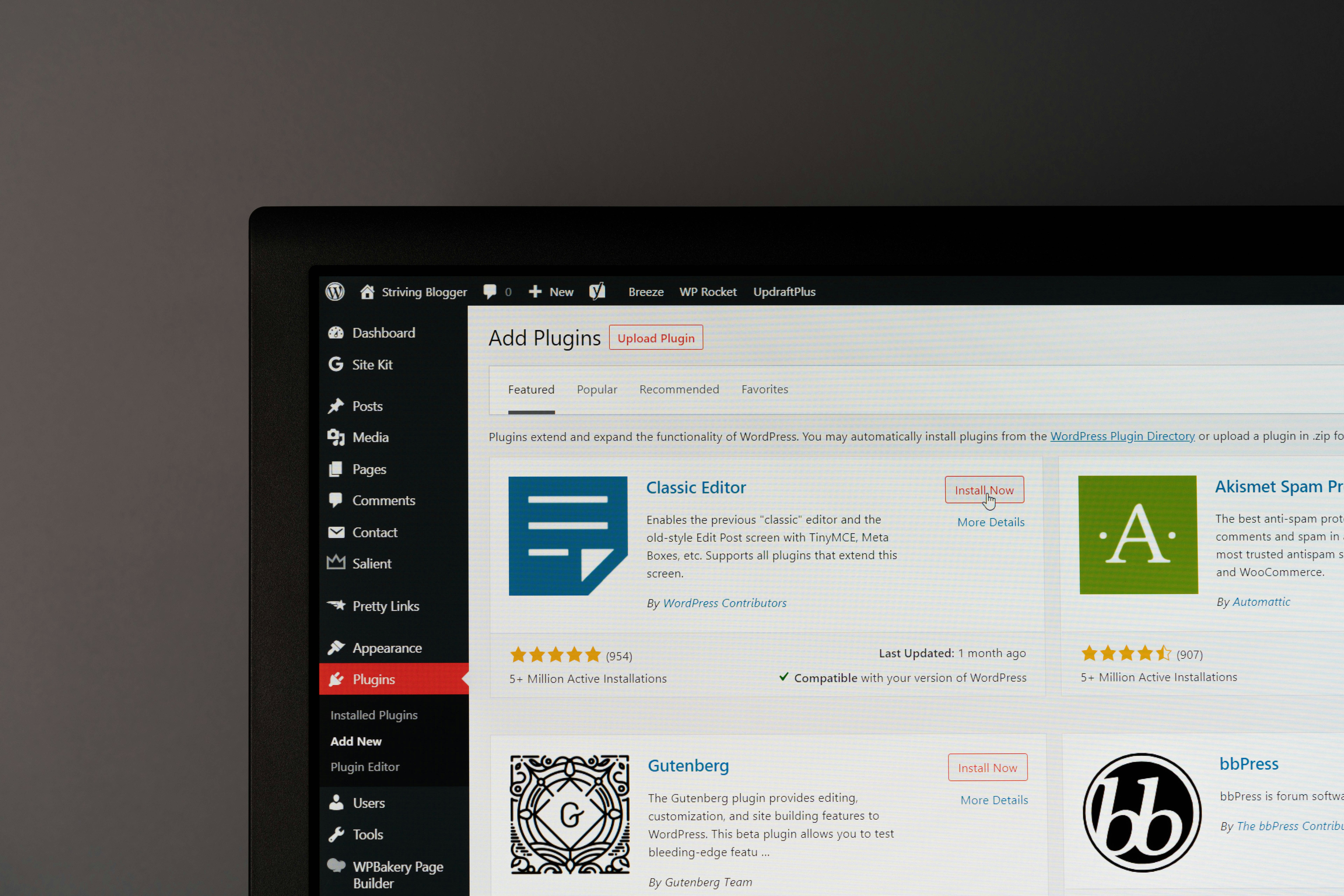WordPress feels halfway here / halfway there; a content management system that now aspires to be a Wix / Squarespace like design editor. There were themes and plugins for that in the past. Now, WordPress makes editing design templates, parts and elements of a website part of its core functionality.
The problem with WordPress is it’s playing catchup and the services it’s trying to catch up to are becoming way more powerful, way quicker.
To my mind, the future of web publishing is in apps. There are lots of examples of this; Webflow, Bubble are two of the most prominent. Both are taking simple web publishing drag-and-drop features and adding powerful application logic on top. It’s now possible and quite easy to create apps for very specific use cases. WordPress is finally getting the modern publishing features it needs, but it has a long way to go to be able to compete with application builders.
Site Editing
WordPress has been making a slow transition to ‘Site Editing’ over a number of years. With the release of WordPress 6, it’s a little closer to achieving a full site editing experience. This website (and many others I’ve designed for clients) uses a combination of plugins and page builders to achieve the layouts and functionality I need. My personal preference is a combination of Advanced Custom Fields, Custom Post Types, Astra Theme, Beaver Builder and Beaver Themer.
WordPress could make Beaver Builder redundant. Could I make do without Beaver Builder and Beaver Themer and let WordPress 6 do the heavy lifting. I’m not so sure that I’m happy to do that right now.
WordPress still requires the installation of a theme, many of which have been updated to allow for the new site editing feature. WordPress takes away the functionality that themes like Beaver Builder / Beaver Themer and Astra have offered for ages and bakes it into the core of the application. That means headers, footers, post templates, and even page parts can now be created and edited within the core functionality of WordPress. That was possible in the past through code and it’s what themes like Astra and BB have made possible. Now, however, if you want to create custom layouts, it’s a case of drag and drop visual building.
There is a lot more to WordPress 6 and the new direction that WP is taking. To my mind, we’re still stuck in a halfway house between the old WP and the ‘new’ WP. Like everything WP, it’s a matter of evolution and with the enormous plugin and theme repository supporting the WP industry, it will be a slow change.
Post-editing and blocks
One of the most obvious changes lies in the post-editing interface. Here, a new interface clears the ‘clutter’ of the old WP and introduces a new fresher, cleaner clutter. A toolbar across the top of the editing window gives you access to basic tools with ‘more settings’ available in a panel on the right. This panel gives you access to the ‘post and block’ editor allowing you to access detailed settings for your page and elements therein. The problem is everything seems spread out all over the interface with many of the tools you need hidden away, presumably to reduce the clutter.
WP now has access to ‘Blocks’ – little pieces of editing magic that range from standard paragraphs to headings and more advanced elements like post titles, featured images, galleries, widgets and any other functionality introduced through additional plugins. Blocks also include layout elements like grids and flexbox making it really easy to construct your post and pages in the way you want.
Here I’ve used a Post Grid block to show my other blog posts – editing this is really simple and would have required quite a lot of additional coding in the past to make this possible. Blocks are extremely powerful and make accessing metadata really easy.
Many plugin and theme developers have made blocks available giving you access to all sorts of additional functionality. This is pretty cool when you’re setting up your core templates.
Patterns & Reusable Blocks
Hidden away in the ‘Toggle Block Inserter’ are patterns and reusable blocks. Sitting alongside the Blocks tab, these two additional tabs give you access to predefined or customisable layout elements. WordPress defines Patterns as:
Block Patterns are predefined block layouts, available from the patterns tab of the block inserter. Once inserted into content, the blocks are ready for additional or modified content and configuration.
Patterns are little layout templates assembled by theme or plugin developers to make it easy to layout pages very quickly. They’re reusable elements that can be added and edited anywhere on a page. Unlike reusable blocks, patterns themselves can only be introduced to the editing experience through theme functionality whereas, with reusable blocks, you can build up layouts and elements yourself through the reusable block editor.
This makes customising WordPress far easier than in the past and makes page drag and drop features a central theme of WordPress.
WordPress feels very much in the grip of a transition – a long overdue catch up to make it easier for designers like myself to create powerful functioning websites. I’ve made good use of other website builders, Webflow being my go-to right now but WP will remain a central tool in my website creation box. It’s good to see this innovation taking place – the industry is much more invigorated by the possibilities and end-users will benefit in the long run.
Let’s just hope WordPress manages the transition quickly and is able to innovate much quicker in the future.
